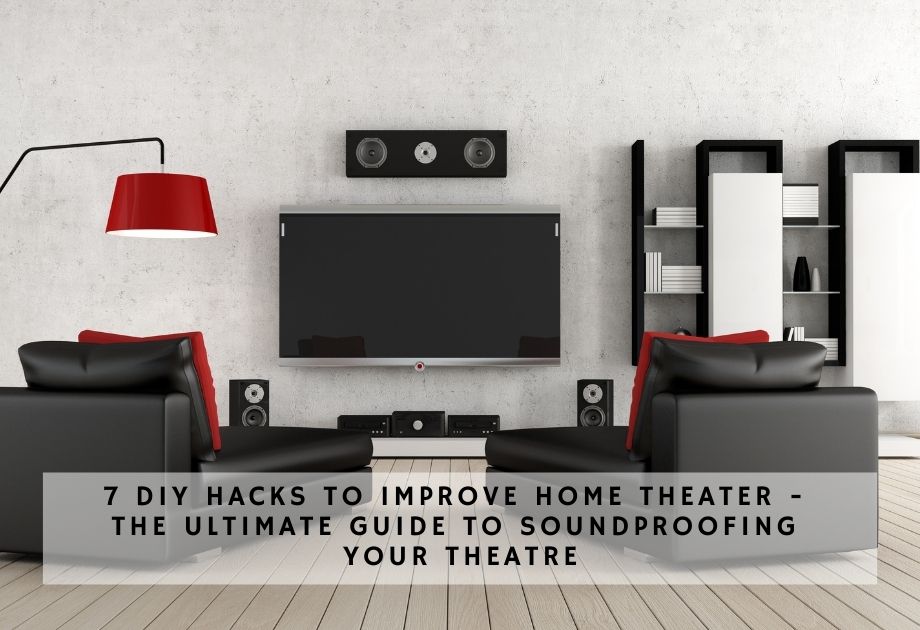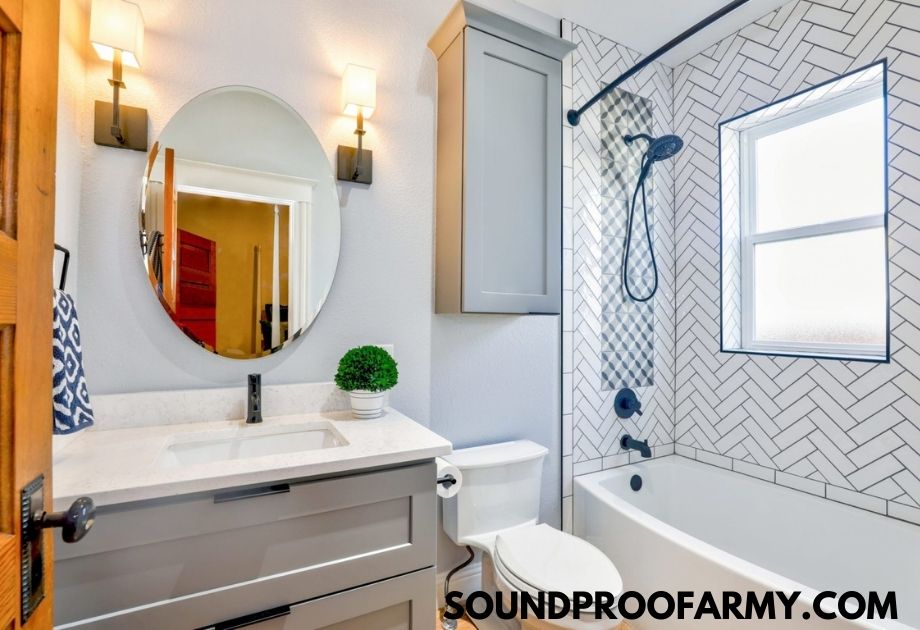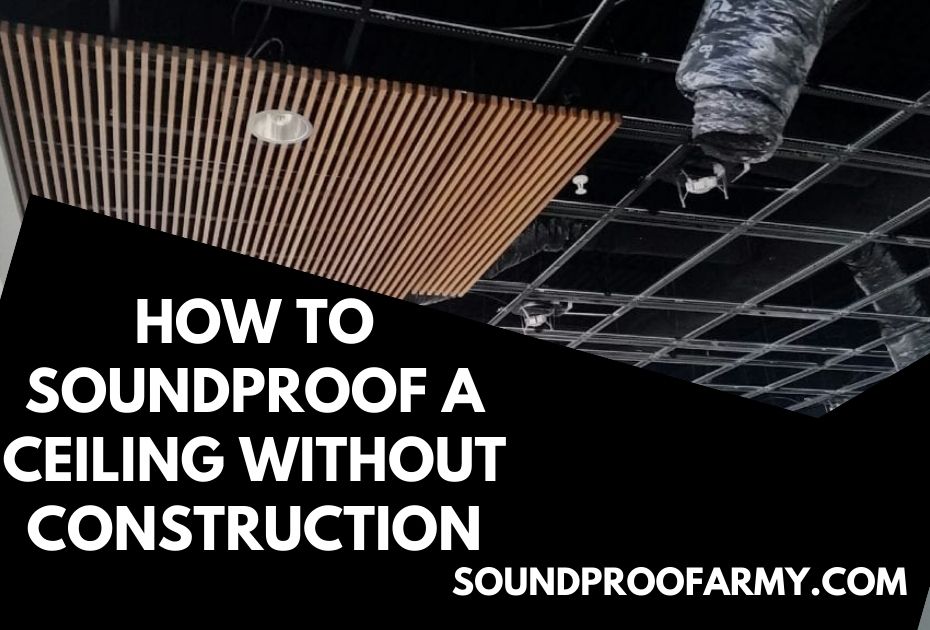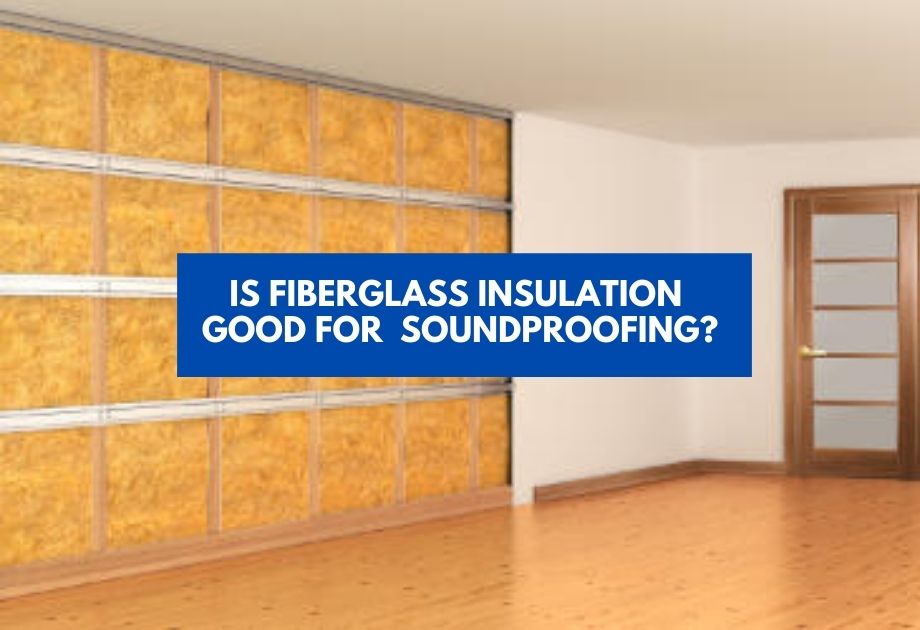Soundproofing your home theater is one of those things that you probably don’t think about until it’s too late. You’ve invested a lot of money into buying the perfect sound system, seats, and projector for your home theatre. All this time, you were worried about how good everything sounded/looked but forgot to pay attention to what was going on outside the four walls of your room.
We’re here to tell you that soundproofing is important! it isn’t just about blocking out exterior noises but also making sure that you are not causing any harm to your neighbors.
As we are here to discuss the hacks to improve the experience of home theatre, it is pertinent to elucidate the difference between soundproofing and acoustic control.
Acoustic control has to do with controlling the soundwave’s direction inside the home theatre to maximize the enjoyment of your movie experience.
On the other hand, Soundproofing is the process of blocking sound so that it doesn’t escape and also making sure that no external noises can enter your home theatre, which would be too much for anyone who’s not an audiophile.
By Acoustic Treatment, we intend to cover both these aspects. As the room consists of walls, ceiling, floor, doors, and windows, some methods would have to do with the acoustic treatment of windows and some would have to do with the acoustic treatment of the ceiling.
Let’s take a look at some of the best DIY hacks for the acoustic treatment of home theatre. But before we do that, let’s discuss a few important things.
Table of Contents
What is a sound transmission class or STC? How to measure it?
Sound transmission class is an ASTM-defined standard for the soundproofing capability of a partition. The lower the STC the poor the sound insulation.
STC of a partition is measured by calculating the drop of sound power (in decibels) when it moves between adjacent rooms.
For building a home theater in the basement or a spare room, you will have to comply with the building STC regulation. otherwise, you would risk getting yourself in hot water with the authorities or nearby neighbors.
What is the difference between structure and airborne sound?
Structure-borne sound travels faster than airborne sound. It is also known as the impact sound. For your home theater to be completely soundproof, you will have to take care of both.
A list of DIY home theatre acoustic treatment methods:
Keep in mind that these methods would not be able to completely block out the noise, but they would significantly reduce outside noise and make your home theatre a much more enjoyable space to be in.
For effective acoustic treatment, you can perform two or three of these methods in combination.
You should soundproof the home theatre doors
Windows and doors are responsible for both structure-borne and airborne sound transfer in and out of the theater.
Doors have gaps at the bottom and top that create sound transmission routes. Closing these gaps with a sealant will reduce airflow and stop noise from coming in or going out.
There are plenty of ways you can seal these gaps and cracks on the door:
- You can apply green glue on the wall as the adhesive has some excellent soundproofing properties.
- You can use silicone caulk on the door frame.
- Or you could also use double-sided foam tape to seal any cracks or gaps.
- You can use a door bottom or door sweep.
- Door blankets are also quite effective.
Also, modern doors are left hollow and so they are poor sound insulators.
Increasing the density of the door by adding drywall is also worth considering to reduce sound escaping.
Windows acoustic treatment is a must
One simple way to make the windows of the home theatre soundproof is the window inserts.
A window insert can reduce the sound significantly by blocking off sound waves. They need to be fitted into place tightly and sealed with a soundproofing sealant.
Window inserts have silicone seals and acoustic foam.
The ceiling acoustic treatment is for upsides neighbors
The sound from the theatre can go through the ceiling and bother your neighbors. A simple solution is to add acoustic tiles on top of the drywall.
For lightening, you should not opt for the built-in light bulb ceiling as it may allow the sound to leak. Alternatively, you should consider light panels or tubes.
Home theater floor acoustic treatment
If your home theater is in the basement, there is obviously no need for floor acoustic treatment. Right?
Wrong. As your home is made of a structure that is interconnected there are high chances of leakage through structure-borne sound.
Also, if you have decided to make the room a home theater that is just above the sleeping room of a sulky neighbor, floor soundproofing can become all the more necessary.
There are a number of materials that you can use between your floor and subfloor to soundproof the room against sound leakage.
Shredded or foamed rubber can be used as well as Natural fibers or cork as underlayment material. All are good sound insulators.
Soundproof the walls
Like ceiling and floor, the walls can transmit structural and airborne sound.
For wall acoustic treatment, you can take a lot of measures. First and foremost, you would have to deal with the cracks. The best way is to add drywall or apply glue to the cracks.
Next, you should reduce vibrations by absorbing sound to control structural borne sound.
The vibration effect can be dampened by using a heavy and dense material. Mass-loaded finals and acoustic foam panels can do a good job at this.
You can also hang heavy drapes or curtains to increase the absorption of sound waves through wind pressure created by blowing sound waves against it.
Do consider the sound noise deadening material that entraps the sound and thus makes the theater soundproof.
HVAC Vent Soundproofing
Air vents are the most overlooked items when you are soundproofing the home theater.
As you might know, airborne sound can travel easily through air-con vents and thus make the sound louder.
That is why it is important to use a soundproof cover or an acoustic sealant for airtightness between the vent and wall.
Soundproofing home theater vents can be done by using different methods such as duct liner, sound baffle, and soundproof soffits. All of these try to dampen the sound wave so it loses its energy while moving through a duct.
Final thoughts on home theater acoustic treatment:
You need to follow a systematic approach for an effective home theater acoustic treatment.
The above-mentioned hacks would allow you to improve your movie experience and sound quality.
You should start with the most vulnerable spaces like doors and windows before moving on to the ceiling, floor, and walls.
Acoustic treatment would contribute greatly to your home cinema experience. We promise you that we would keep digging for new methods and hacks to soundproof the home theater.






![How To Soundproof A Basement Ceiling Cheaply [9 Ways]](https://soundproofarmy.com/wp-content/uploads/2021/06/cheapest-ways-to-soundproof-basement-ceiling-Simple-DIY-Hacks.jpg)

![How to Soundproof a Door with Household Items [14 Effective Ways]](https://soundproofarmy.com/wp-content/uploads/2021/07/How-to-Soundproof-a-Door-with-Household-Items.jpg)







